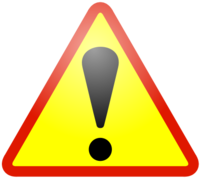Section Four
4. Prescribing, Informed Consent, Monitoring
4.1 Prescribing Issues
4.1.1
Below are some contributing factors, which would have increased the risks regarding the forming of dependence in Wayne’s case.
- Prolonged prescriptions
- Multi-prescribing
- Suitability of prescriptions
- Informed consent (See Article 4.2)
- Monitoring (See Article 4.3)
(1) Prolonged Prescriptions
4.1.2
As mentioned in Report 3, and in previous reports, the risk factor with regards to the forming of dependency in Wayne’s case would have increased by about 50~100% simply based on the prolonged period of the prescriptions.
(2) Multi-prescribing
4.1.3
As mentioned in Report 3, and in previous reports, the above risk factor would have increased yet even further, based on the fact that Wayne was prescribed multiple combinations of Benzodiazepines. This is because Benzodiazepines do not mix well, and when they are mixed, there is an increased possibility of side-effects and dependency forming.
(3) Suitability of Prescriptions
4.1.4
Firstly, in order to help determine the suitability of the drugs that were prescribed to Wayne, we should consider the reason why they were prescribed to begin with.
4.1.5
Regardless of their potency, speed of elimination or duration of effects, the therapeutic actions of all Benzodiazepines are virtually the same, as follows:
- Anxiolytic (relief of anxiety)
- Hypnotic (promotion of sleep)
- Myorelaxant (muscle relaxation)
- Anticonvulsant (control fits convulsions)
- Amnesia (sedation for surgical procedures)
4.1.6
We know from the evidence that Dr. X diagnosed Wayne as having “Sylvian Aqueduct Syndrome”. Also, we know that Neurologist, Dr. K from the STRC Hospital, who saw Wayne initially, and Neurologist, Dr. Hutchinson, who saw Wayne later, both suspected a “vestibular problem”.
4.1.7
With regards to the therapeutic effects of Benzodiazepines as a suitable means of treatment for either of these diagnoses, Dr. Hutchinson, supplied the following information in his letter, dated 11 Feb 2008.
“I would agree with doctors at the STRC Hospital that Mr Douglas most likely had an episode of Acute Vestibulopathy in May 2000.”
“A range of neurological conditions (for example, cerebellar infarction, multiple sclerosis) can mimic Acute Unilateral Peripheral Vestibulopathy, but all are excluded or made very unlikely if the brain MRI scan is negative. Methylprednisolone significantly improves the recovery of peripheral vestibular function in patients with Acute Unilateral Peripheral Vestibulopathy(3). Patients are sometimes also administered intravenous fluids and anti-emetics.”
“The Sylvian Aqueduct Syndrome is rare and seldom encountered in modern neurological practice. A literature search in February 2008 (Pubmed) using the expression “Sylvian Aqueduct Syndrome” yielded just 23 articles since 1966, with only 3 articles in the past 20 years. It refers to a syndrome whose features include vertical gaze restriction, abnormal pupillary reaction, upper lid retraction, and convergence–retraction eye movements. Paralysis of convergence and skew deviation may also occur. Sylvian aqueduct syndrome usually occurs in patients with shunted hydrocephalus whose shunts become blocked(4). Single case reports have also described the syndrome in patients with midbrain infarction(5), multiple sclerosis(6), thalamic haemorrhage(7), tumours in the pineal region(8) and unilateral midbrain lesions(9). Mr Douglas apparently did not have the above constellation of neurological signs, but more importantly his brain MRI scan did not show hydrocephalus or any other disorder which can produce the Sylvian Aqueduct Syndrome.”
“I do not know of any reason, theoretical or otherwise, why benzodiazepine medication would have had a role in the treatment of Mr Douglas in 2000. Benzodiazepine drugs do not have useful anti-emetic or anti-vertiginous properties and have no clear role in the treatment of Acute Unilateral Peripheral Vestibulopathy. Further, benzodiazepine drugs would not be effective in treating hydrocephalus or any of the other conditions which may produce the Sylvian Aqueduct Syndrome.”
4.1.8
With regards to the therapeutic effects of Benzodiazepines as a suitable treatment for anxiety, they are effective for the short-term treatment of acute trauma (for not more than about 2 ~ 4 weeks); however, they are not suitable as a means of long term regular treatment, due to the fact that dependence can be rapidly formed.
“The Committee on Safety of Medicines and the Royal College of Psychiatrists in the UK concluded in various statements (1988 and 1992) that benzodiazepines are unsuitable for long-term use and that they should in general be prescribed for periods of 2-4 weeks only.” (See Benzodiazepines: How They Work and How to Withdrawal. Prof. C. H. Ashton. Revised August 2002 – Chapter 2, Page 2/10 of online version).
4.1.9
Subsequently, regardless of the reason why these drugs were prescribed, whether it was for treating anxiety or Sylvian Aqueduct Syndrome, Wayne’s treatment cannot be considered as ideal, and over a prolonged period, it ultimately led to the formation of Benzodiazepine dependency.
Top of Page
4.2 Informed Consent
4.2.1
Below are some indicators that would suggest Wayne was not given adequate informed consent with regards to his multiple prescriptions of Benzodiazepines.
- Dr. X’s diagnosis did not include anxiety
- Reported reason for prescriptions (during mediation)
- Efforts to seek drug related information
- Dr. Whitwell’s patient file
- Presentation to our service
(1) Dr. X’s Diagnosis Did Not Include Anxiety
4.2.2
Firstly, 4 out of the 5 drugs that were prescribed to Wayne are used in the treatment of anxiety, including 3 different kinds of Benzodiazepines and 1 tricyclic antidepressant.
However, Dr. X’s patient file clearly shows that there was no diagnosis made regarding an anxiety, condition, nor was there any entries made in his patient file relating to the treatment of anxiety for the entire the duration of the treatment.
This supports Wayne’s verbal reports that there was never any discussion regarding the treatment of anxiety.
(2) Reported Reason for Prescriptions (During Mediation)
4.2.3
I have been informed that when asked during mediation why the 3 different kinds of Benzodiazepines and 1 tricyclic antidepressant were being prescribed, Dr. X responded by saying “Acute vertigo attacks are scary and are often accompanied by a sense of anxiousness and so, a decision was made to “add a little something” into the prescriptions for this”.
To use the words “add a little something” seems to be quite an understatement. This is because, once again, the majority of the drugs prescribed were for the purpose of treating anxiety, and therefore, Wayne should have been given adequate informed consent with regards to this, together with an explanation of the possible risks and alternative options, at the time of his very first consultation - before the treatment began.
(3) Efforts to Seek Drug Related Information
4.2.4
Wayne reports that from about October 2000, when his condition started to deteriorate more notably, he began making various efforts to seek information about the drugs that had been prescribed to him by Dr. X.
4.2.5
These efforts included making inquiries to the dispensary used by Dr. X, asking family and work colleagues to see what they could find, and later getting information from the dispensary at the O Medical Center.
NB: Wayne says that he has copies of the information he received as a result of the above research.
4.2.6
The fact that Wayne was making efforts to seek information about the drugs is further suggestive that he did not receive, what Wayne would consider, adequate information during his consultations.
(4) Dr. Whitwell’s Patient File
4.2.7
The referral form to our service from Dr. Whitwell, dated 10 April 2001, says “he (Wayne) says these (the drugs) were prescribed in Japan without informed consent”.
Wayne reports that after learning of the addictive nature of Benzodiazepines from Dr. Whitwell, he felt surprised that he had not been told this at any stage under Dr. X, and subsequently, responded by making the above comment.
NB: One must also consider that at this point in time, Wayne’s only concern was with getting well again. He had absolutely no thoughts of pursuing litigation, and therefore, had no other reason for saying that he had not been given informed consent, apart from that actually being the case.
(5) Presentation to Our Service
4.2.8
Upon presentation to our service it was clear that despite the efforts above (4.2.4~6) Wayne knew very little about the nature of the drugs and the reason why they had been prescribed. As far as he knew, all of the drugs, including the 3 different kinds of Benzodiazepines and 1 tricyclic antidepressant had been prescribed as a means of treatment for “Sylvian Aqueduct Syndrome”.
NB: Upon learning about the nature of Benzodiazepines Wayne showed a tremendous desire and commitment to stopping, which further supports the fact that he does not have an addictive type personality. Subsequently, had he been properly informed, as to the nature and potential risks of Benzodiazepines, it is possible that Wayne may have chosen to look at alternative options instead.
Top of Page
4.3 Monitoring
4.3.1
Below are some indicators that would suggest Wayne’s Benzodiazepine treatment was not monitored sufficiently.
- The Formation of dependence
- Reported admission of “inadequate knowledge” during mediation
- Signs of tolerance were overlooked
- Withdrawal symptoms were overlooked
- Given authorization to drink alcohol
- No records of monitoring for dependence
(1) The Formation of Dependence
4.3.2
The simple fact that Wayne had formed dependence suggests that the monitoring was not adequate.
(2) Reported Admission of “Inadequate Knowledge” During Mediation
4.3.3
I have been informed that when Legal Consul A asked Dr. X during mediation if he knew what to look for with regards to recognizing when a patient is forming dependence, the answer was “No”.
4.3.4
To know what to look for and to be able to recognize when a patient may be forming dependence, is a fundamental responsibility for any doctor prescribing Benzodiazepines.
4.3.5
Further, they should also inform the patient about what to look for and ask the patient to report immediately any changes in their condition (any new symptoms etc).
(3) Signs of Tolerance Were Overlooked
4.3.6
As outlined in Article 2.1 of my 3rd report, Wayne was showing signs of tolerance after about 1.5 months of treatment. Had there been an appropriate monitoring system in place, this could have been detected and the treatment reassessed accordingly.
4.3.7
According to Wayne’s statement, when he complained of developing palpitations in August (following about 1.5 months of treatment), Dr. X responded by saying “Don’t drink cold water directly after taking a bath” and “Don’t fill the bath water over your chest”. In response to Wayne’s deteriorating appetite, Dr. X responded by saying “You need to eat more”. Over the months that followed, other responses made to Wayne’s complaints about his deteriorating condition included “You’re probably feeling worse because of recent bad weather” and “You have to toughen up”
4.3.8
The above comments support the noted admission made by Dr. X during mediation with regards to not knowing what to look for when a patient is forming a state of dependence.
(4) Withdrawal Symptoms Were Overlooked
4.3.9
As outlined in Article 2.2 of my 3rd report, Wayne was developing symptoms of withdrawal due to tolerance following about 4~6 months of treatment. Had there been an appropriate monitoring system in place, this could have been detected and the treatment reassessed with a view to implementing a controlled reduction.
(5) Given Authorization to Drink Alcohol
4.3.10
Wayne reports that When Dr. X made the first prescription, he advised that it was okay to consume alcohol whilst taking the drug treatment.
NB: This is consistent with the entry made in Dr. X’s patient file, where it says “Drinking alcohol once a week” (See page 10).
4.3.11
However, contrary to this advice, patients should be advised to avoid alcohol and they should be informed about the potential risk of additive effects and increased side effects.
“Benzodiazepines have additive effects with other CNS depressants, including other hypnotics, sedative antidepressants, neuroleptics, anticonvulsants, sedative antihistamines, and alcohol. The combined disinhibitory effects of alcohol and benzodiazepines may also be additive and contribute to aggressive behaviour. Patients prescribed benzodiazepines should be warned of these interactions.” (See Toxicity and Adverse Consequences of Benzodiazepine Use. Prof. C. H. Ashton. Page 2/12 of online version).
(6) No Records of Monitoring for Dependence
4.3.12
Dr. X’s patient file contains no records of monitoring for potential drug dependency, which further supports the fact that the monitoring was insufficient and ultimately resulted in the formation of Benzodiazepine dependency in Wayne (Evidence Otsu A1).
Top of Page
4.4 Clinical Considerations
Below is a list of considerations regarding prescribing, informed consent and monitoring. Most of these are based on examples in accordance with New Zealand law, and recommendations established by the World Health Organization. As I am not familiar with Japanese law, I am unable to make reference with regards to the guidelines in Japan; however, I am sure that Wayne’s lawyer will be able to clarify this.
4.4.1
As outlined in previous reports, it is recommended that Benzodiazepines should not be prescribed for any longer than 2 ~ 4 weeks as dependence can be rapidly formed. (See reference in Article 4.1.8)
4.4.2
Benzodiazepines are highly addictive drugs that can produce many adverse reactions including tolerance, withdrawal, side-effects and dependency. Subsequently, when prescribing any medication, unless managed properly, some prescriptions have the potential to cause difficulties for the patient, their families, their work and others around them.
4.4.3
For this reason, in principle, the patient has the fundamental right to be informed of the risks before being prescribed Benzodiazepines, so that they may be able to make an informed decision regarding their health and well-being.
4.4.4
This includes an explanation of his or her condition, an explanation of why the proposed medication is considered suitable for treating their condition, an explanation of the options available, including an assessment of expected risks, side effects and cost of each option.
NB: In the case of New Zealand, this outlined by the Medical Council of New Zealand Information and Consent April 2002. These rights are also consistent with the WHO (1994, 2000) “Guide to Good Prescribing, a Practical Manual”.
4.4.5
Further, when doctors prescribe addictive drugs, they need to keep in mind and monitor for the development, or management of potential drug dependency.
NB: This is a requirement of the Medical Council of New Zealand and it is also consistent with guidelines developed by other countries e.g. Hong Kong (Hong Kong college of psychiatrist 1997), USA (Principles of Addiction Medicine, Benzodiazepine Prescribing Guideline Work Session, Maine).
4.4.6
The WHO (1994, 2000) “Guide to Good Prescribing, A Practical Manual” gives an outline of the process of rational treatment / prescribing of medication. It defines 6 steps as follows:
- Define the problem
- Specify the therapeutic objective
- Verify the suitability of the prescription
- Give information, instructions & warnings
- Start the treatment
- Monitor treatment
4.4.7
To expand further on step 4 (information, instructions and warnings), necessary provision of information includes the following:
- A description of the effects of the drug (which symptoms will disappear and when; how important is it to take the drug; what happens if it is not taken)
- Side effects (which side effects may occur; how to recognize them; how long they will remain; how serious they are; what to do if they occur)
- Instructions (when to take; how to store; how long to continue the treatment; what to do in case of problems)
- Warnings (what not to do; maximum dose; the need to continue treatment)
- Next appointment (when to come back; when to come back earlier)
- Make sure everything is clear to the patient.
NB: As with the prescribing of any medication, you need to consider whether the patient is on any other medication and if there is a possibility of drug interactions, especially when multi-prescribing.
4.4.8
As Benzodiazepines are highly addictive drugs that can produce many adverse reactions, “Monitoring” is necessary when prescribing these drugs.
4.4.9
Monitoring should include the following (WHO Guide to good prescribing, a practical guide 1997):
- Regular observations to see whether the illness is cured. NB: When it is, the treatment should be stopped.
- Regular observations to see whether the treatment is effective. NB: If it is, but the illness is not yet cured, then the prescribing doctor should include in their review of the patient; a review of any side effects and if serious, the treatment should be reassessed.
- Regular observations to see whether the treatment is ineffective. NB: If it is, the treatment should be reviewed.
4.4.10
Good medical practice dictates that monitoring is needed, as outlined above, to ensure that the patient does not suffer from any adverse reactions as a consequence of the treatment.
4.4.11
Monitoring should involve regular reviews of the patient to ascertain whether the medication is still needed and if there are any unintended effects occurring as result of the medication.
4.4.12
Below is a list of appropriate measures that need to be taken when a patient exhibits signs that they may be forming a state of Benzodiazepine dependence (based on WHO Guide to Good Prescribing, A Practical Manual, 1997).
- Review diagnosis
- Review therapeutic objectives
- Review suitability of treatment for this patient
- Review whether the drug was correctly prescribed
- Review whether the patient understood the treatment correctly and whether they took the drug correctly
- Review whether the patient was correctly monitored
Top of Page
4.5 Findings
4.5.1
The aforementioned evidence clearly shows that Wayne was not given adequate informed consent with regards to the prescriptions. There was no explanation / information given with regards to treating symptoms of anxiety, nor were there any explanations / information given with regards to why the proposed medication was considered suitable for treating Wayne’s condition. As far as Wayne knew, based on the information he had been given, the prescriptions were for the sole purpose of treating “Sylvian Aqueduct Syndrome”.
4.5.2
The fact that Dr. X overlooked signs of tolerance and the development of symptoms consistent with withdrawal also suggests that the monitoring was inadequate, and that Wayne was not adequately advised with regards to the possibility of dependency and side-effects, what the signs are, and what to do should they occur.
4.5.3
Dr. X’s patient file clearly shows that there was no monitoring system in place for detecting potential dependency. As a result, vital signs were overlooked, and the opportunity to review the treatment was missed.
4.5.4
Subsequently, the appropriate measures (outlined in Article 4.4.12 above) were not taken, and despite Wayne’s efforts to draw attention to his deteriorating condition, he was continuously given repeat prescriptions of Benzodiazepines resulting in the compounding of his drug dependency.
Top of Page

The primary language of this website is English. Japanese appears as translations only (except for some original court documents).
These translations have been done by many different translators including me. Therefore, there are differences in quality and styles.
Please understand that I am not native Japanese and subsequently there are parts that may sound unnatural in Japanese.
“If any drug over time is going to just rob you of your identity [leading to] long, long term disaster, it has to be benzodiazepines.”

Dr John Marsden,
Institute of Psychiatry, London
November 1, 2007
“Withdrawal symptoms can last months or years in 15% of long-term users. In some people, chronic use has resulted in long-term, possibly permanent disability.”

Professor C Heather Ashton
DM, FRCP,
Good Housekeeping, 2003
“The benzodiazepines are probably the most addictive drugs ever created and the vast army of enthusiastic doctors who prescribed these drugs by the tonne have created the world's largest drug addiction problem.”

The Drugs Myth, 1992
“If there's a pill, then pharmaceutical companies will find a disease for it.”

Jeremy Laurance,
The Independent, April 17, 2002.
“To rely on the drug companies for unbiased evaluations of their products makes about as much sense as relying on beer companies to teach us about alcoholism.”

Marcia Angell MD
(Former) Executive Editor New England Journal of Medicine
“Benzos are responsible for more pain, unhappiness and damage than anything else in our society.”

Phil Woolas MP,
Deputy Leader of the House of Commons,
Oldham Chronicle, February 12, 2004
“It is more difficult to withdraw people from benzodiazepines than it is from heroin.”

Professor Malcolm H Lader
Institute of Psychiatry London
BBC Radio 4, Face The Facts
March 16, 1999
“Clearly, the aim of all involved in this sorry affair is the provision of justice for the victims of tranquillisers.”

Seems people are all saying the same things over and over…

- I was like a zombie
- It felt like I was in hell
- It was much harder to come off benzodiazepines than anything else I'd ever had before
- It took a chunk of my life away
- It has destroyed my life
- The doctor never told me they were addictive / The doctor told me they weren’t addictive
- When I complained my condition was worsening the doctor prescribed me more...
The informed consent argument formed an integral part of the case because it was needed to prove negligence.

Without negligence there would have been no accountability, and therefore, no case from the outset.
In section 4 of his fourth report, Addictive Medicine Specialist, Dr. Graeme Judson explained the principles of prescribing and informed consent in relation to my case and sample applied.
The monitoring argument also formed an integral part of the case because it too was needed to prove negligence.

As above, without negligence there would have been no accountability, and therefore, no case from the outset.
As with informed consent, in section 4 of his fourth report, Addictive Medicine Specialist, Dr. Graeme Judson explained the principles of prescribing and monitoring in relation to my case and sample applied.

This section focuses on some of the apparent injustices of the Japanese courts in my case. To help highlight these, some parts of this section include cross-referencing between the High Court Verdict and the Dependency Reports which were all based on the official evidence and the DSM-IV-TR diagnostic criteria for dependency.
(Partial Reference: benzo.org.uk)
Journalists have regularly exposed the Benzodiazepine Scandal with stories of celebrity deaths attributed to benzo use as well as the blighted lives of ordinary people.
Benzodiazepines were, by all accounts, implicated in the deaths of:
- Elvis Presley
- Paula Yates
- Michael Jackson
- Heath Ledger
- Brittany Murphy
- Amy Winehouse
- DJ AM (a.k.a. Adam Goldstein)
- Anna Nicole Smith
- Margaux Hemingway
- Don Simpson
- David Foster Wallace
- Whitney Houston

I Will Always Love You
How anti-anxiety meds are killing celebrities
It used to be that hard drugs were the cause of celebrity overdoses…Of the celebrities who have overdosed on drugs in the past five years, eight appear to have taken prescription medications — specifically, a mix involving easily accessible anti-anxiety medications known as benzodiazepines or “benzos.”








